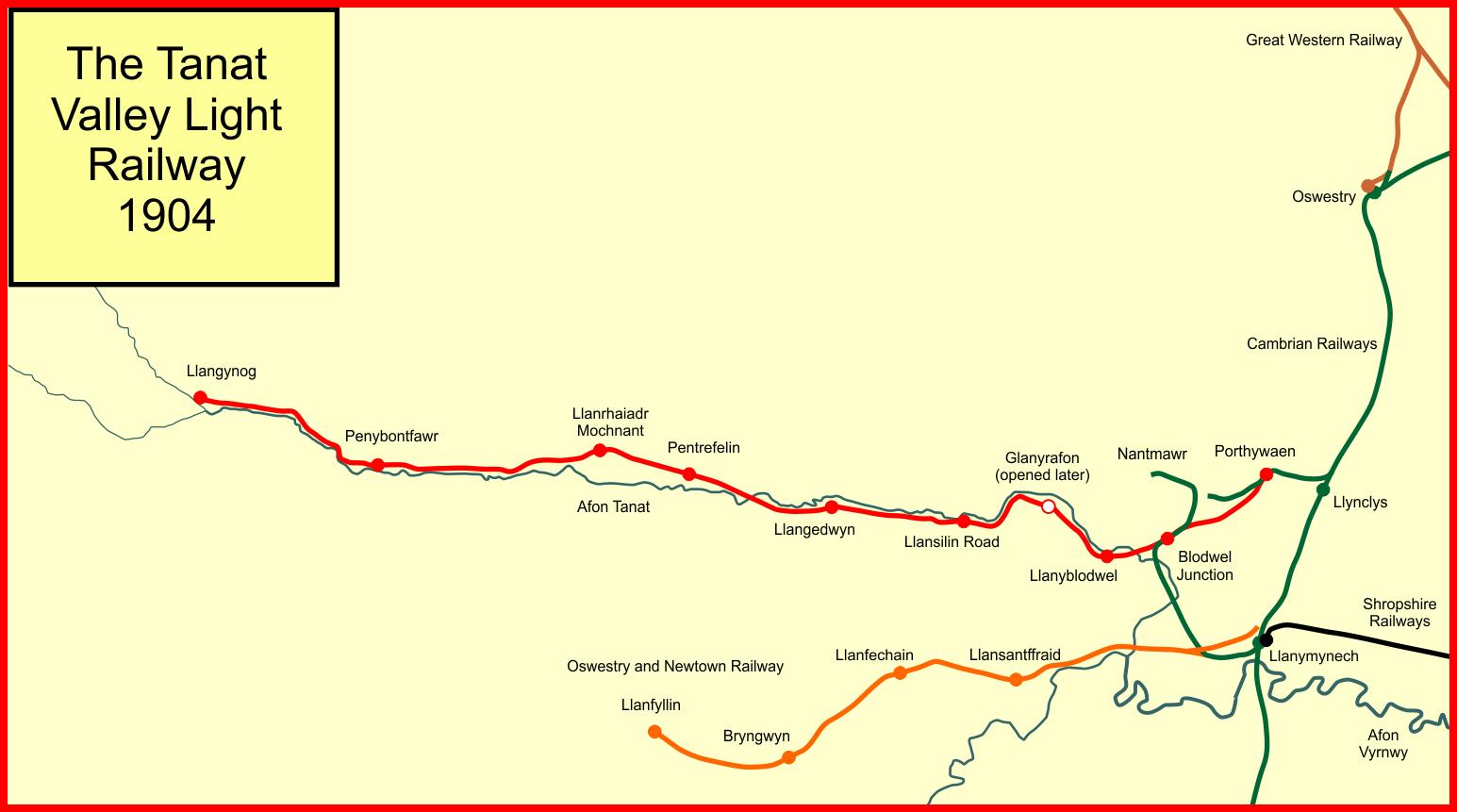THE TANAT VALLEY LIGHT RAILWAY HISTORY
The Nant Mawr Branch of the Potteries, Shrewsbury and North Wales Railway (The Potts) was opened in 1872 to supply Limestone traffic.
Despite a number of other reasons being given, this was the real incentive for the construction of the railway.
Access to the Nant Mawr branch was gained using ‘Cambrian’ lines (which the Potteries, Shrewsbury and North Wales Railway had running powers over for this part) these met South of Llanyblodwel station at a twin junction where Nant Mawr traffic then turned northwards onto the actual branch then slowly travelled north-west underneath the Llanfyllin branch (cam) then across the River Tanat by means of a wooden viaduct, underneath the main road bridge and finally across the river once more using a second wooden viaduct and so into Llanyblodwel itself.
The junction was known as Nantmawr Junction until the first world war after which it became the Llanfyllin Branch Junction.
The actual Nant Mawr branch is on a rising gradient all the way to Nant Mawr, starting from Llanddu it passes under the A495 road bridge and then across whitegates crossing (recently refurbished). The branch then curves gently to the left, crosses a small stream and finally enters the Nant Mawr quarry complex.
The quarry itself was some distance away to the North and stone was brought to the rail head down a tramway, the lower bowl, where the railway terminated had several loops and sidings, some of which served the lime kilns and the hoppers.
Today only the actual branch line from Llanddu to Nant Mawr with a run round loop at each end still exists, there is undoubtedly signs of the former workings buried under the made up land at Nant Mawr, some of which have already been uncovered.
The industrial heritage of the area is to reasonably well documented and like the railway which served it, has a slightly checkered past, in 1860 the Nant Mawr quarry was owned by Mr R France who as
main contractor for both the Potts and the Mawddwy railways enjoyed similar interests to Thomas Savin.
Around the same time the Lilleshall Company based at Donnington in Shropshire was finding it difficult to source enough supplies of lime to ensure continuity at its iron furnaces (Lime was used in the fluxing process) and they took a lease on Nant Mawr quarry, after almost 60 years they surrendered the lease sometime in the late 1920’s early 1930’s for by 1938 the quarry was being worked by the Chirk Castle Lime and Stone Company who continued until Amey Roadstone took over in the late 1960’s before the quarry finally closed in about 1977.
During the closure process much of the land was made up and signs of the former railway workings were covered up, work is already in hand to uncover as much of this as possible, the branch is now uncovered along its full length from Llanddu to the stop block at Nant Mawr and the former connection to the siding in front of the lime kilns has been found.
